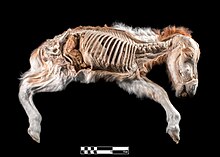GLAM/Model projects
Galleries • Libraries • Archives • Museums
Get Started • Model Projects and Case Studies • Evaluating Projects • Contact Us
For the GLAM-Wiki Community: Connect • Discussion • Calendar • Newsletter • Resources • Volunteers • Other pages
As a community that shares your goals of sharing knowledge with the world, Wikimedia projects can offer a powerful platform for reaching a broad public with content, knowledge and expertise related to cultural heritage collections.
A few interesting facts about why Wikimedia projects have a powerful impact:
- Get over 20 billion pageviews per month from all around the world.
- Are highly visible to diverse audiences:
- through basic searches on Google and other search tools
- being embedded within both social media sites and learning and educational sites
- reach different types of learners: from casual learners to students and from experts and public officials to hobbyists.
- put your institutional collections into the context of other kinds of knowledge.
Galleries, Libraries, Archives and Museums (GLAMs) work with Wikimedia projects to ensure that these global and multilingual shared platforms represent the best information about their areas of expertise, contributing to the missions of these organizations, improving access to their knowledge and collections.
Wikimedia communities have learned a lot from the professional communities working at GLAMs. We have developed a number of tactics and strategies for ensuring that the partnerships between GLAMs and Wikimedia communities are mutually beneficial. Learn more these tactics below!
What kinds of projects or tactics can I use as a GLAM in collaboration with Wikimedia?
[edit]GLAM-Wiki Projects tend to start with one of two high level goals:
Sharing Digital Collections[edit] |
Sharing Knowledge[edit] |
|---|---|
 Frequently these include batch uploads to Wikimedia Commons. The collaborations range from uploads of a handful of math videos or pictures of veterinary collections from University Museums in Brazil, to massive contributions of open licensed content from the Metropolitan Museum or British Library. Each one, provides the opportunity for the local collections to represent and engaged with by users around the world: ensuring the institutional mission of sharing . Who would have imagined that the Veterinary Anatomy collection at Universidade de São Paulo would be viewed by a global public over a million times in a month? There are other ways to share the digital media collections: by transcribing them on Wikisource, or created new recordings or photographs of living traditions, or putting the data about objects in the context of Wikidata. Each of these projects can contribute to the work of the institution: to enrich, share or make more accessible objects in the collection.
|
 GLAMs work with local Wikimedia communities to develop the best strategies and tactics for fulfilling their missions: sometimes this includes hosting editing events; or coordinate online editing campaigns; or integrating data into Wikidata; or figuring out how to best embed Wikimedia content into institutional websites or exhibitions. From small local-historical organizations or public libraries, to some of the largest institutions in the World, like national archives or libraries in the United States, Wales, Ghana, Italy, Bulgaria and the Netherlands, Wikimedia communities have partnered with organizations of all types. Engaging GLAM staff to share their knowledge with the world, helps ensure that the public and researchers find institutional expertise when they need it.
|
Write your own case study! Help us learn from your experience!
[edit]Have you run a GLAM-Wiki project? Does it employ a tactic or strategy not used by other Wikimedia Communities? Help us learn about that project, and how other communities can replicate similar strategies.
To get started, fill out the form box below with a descriptive name. Usually this will be the name of the institution which you partnered with or the title of the project. Once you have chosen that title, click the "Draft a case study!" button, and you will be taken to a page where you can start drafting your case study.
Where else can I find case studies and information about projects?
[edit]- See the historical version of this page and the Case Studies page:
- Each Month the GLAM-Wiki Community publishes a newsletter: This Month In GLAM

